Every angler should know how to tie a Carolina rig. Follow these easy instructions using quality tackle to get it done right the first time.
More...
When I was growing up, we didn't have the Internet and, consequently, didn't have access to tons of fishing information like we do today.
Now it seems that we have the opposite problem: there's too much information out there!
It's all very confusing, and that's why I made this guide to tying a Carolina rig to cut through the clutter and get straight to the good stuff!
Carolina Rig Instructions For Saltwater Fishing
Just as there are many ways to skin the proverbial cat, there are many ways to tie a Carolina Rig and many different parts used to do it.
So, with that in mind, let's keep it simple and use the below recommended list for tying a Carolina rig used for inshore fishing.
Then we will jump into more variations to include those used for for speckled trout, redfish and flounder using live bait and artificial lures.
Carolina Rig Parts List
The very first thing you are going to need are all the necessary pieces of tackle.
After all, any rig is only as good as the parts used to tie it and the person tying them together, right?
So, let's get started with a list of good tackle you can use:
- 20lb test monofilament leader line
- size 5 barrel swivel
- 1/0 kahle hook
- 3/8 oz lead egg sinker
- 8mm glass bead
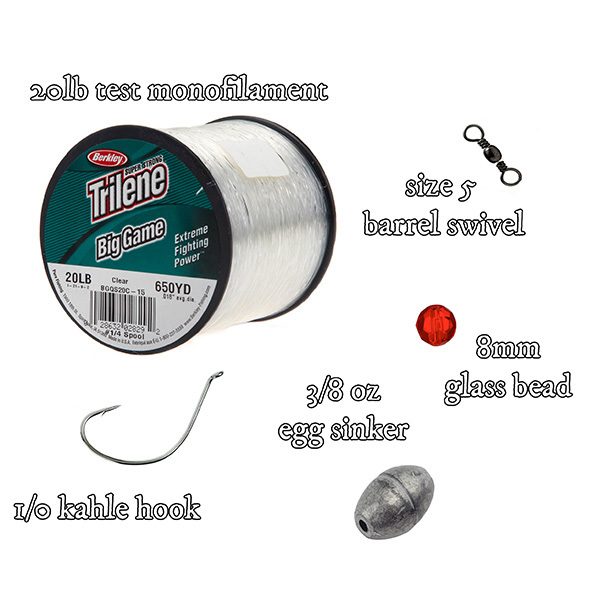
20lb Test Mono Leader Line
You really want to use monofilament as a leader line – and not fluorocarbon – because it tends to float (or is neutral buoyant).
Fluorocarbon is heavier and tends to sink, which would (in theory) make your Carolina rig less attractive because the bait wouldn't be floating up off the bottom, where it is more easily seen and eaten by fish.
Yes, there are exceptions (there always are) but for now we are keeping it simple, right?
The guide at this link reveals more about the differences between the two line types.
There are many good manufacturers of monofilament fishing line out there, but I've used Stren and Trilene for years.
Size 5 Barrel Swivel
Look, it's a barrel swivel, not a nuclear reactor.
Sure, the "recommended" size listed is a size 5, but if all you have is a six or eight then that is fine.
All you need is something not obnoxiously large (or small).
1/0 Kahle Hook
The hook type and size will change with your style of fishing and individual needs, but for all-purpose inshore fishing you will find that a 1/0 kahle hook will serve your needs well.
Not sure what all this 1/0 talk is about? This guide breaks down hook sizes.
Treble hooks really aren't a great option because they tend to snag.
Do what suits you, but I don't use treble hooks for Carolina rigs and catch fish just fine.
3/8oz Lead Egg Sinker
Just like with hooks, sinkers can vary and tend to change with your specific fishing needs.
For the sake of simplicity, it's recommended you use a 3/8oz egg sinker.
It's not too light, not too heavy and does a good job of keeping your bait glued to the bottom.
Above all, they are cheap and readily had anywhere fishing tackle is sold!
With that said, you should have the following weights ready in your tackle box:
- 1/8oz
- 1/4oz
- 3/8oz
- 1/2oz
- 3/4oz
- 1oz
You'll see why later on in this guide.
8mm Glass Bead
You want to use a glass bead to not only protect your knot from the sliding weight, but to also protect the weight from the swivel.
Lead is soft, and will form itself around the swivel over time, causing it to get stuck and ultimately ruining the action of the Carolina rig.
Your main line must slide freely through the sinker!
Instructions For Properly Tying The Carolina Rig
Take a minute to co-locate all your tackle in one spot so everything is easily in reach.
Step One
Cut a length of leader line that is 24 inches long.
Step Two
Tie your barrel swivel to one end of the leader line and your hook to the other.
Step Three
Slide the egg sinker over your main line, followed by the bead.
Step Four
Finally, tie your main line to the remaining side of the barrel swivel.
Congratulations!
You now have a bonafide Carolina rig to catch speckled trout, redfish and flounder with.
Continue reading for other tips to include the best knot to use, bait selection and more.
Extra Tips & Tricks
There are some final things you want to know about Carolina rigging, so here they are:
Which knot is best?
The one you are good at tying.
I am proficient at tying an Improved Clinch, so that is what I use for pretty much everything.
If you're better at tying a Palomar knot, then tie a Palomar knot.
Otherwise, I don't think there is much use in stressing over knots because they play such a small role in finding and catching fish.
Beef It Up For Bull Reds
Bull redfish are tackle breakers! If you want to land them successfully you'll want to toughen up your tackle, to include parts used to tie your Carolina rigs.
For this I recommend a size larger barrel swivel, 30lb test monofilament and – very important – a 3/0 extra strength kahle hook.
Do you really need the bead?
No, not really. I find myself re-tying so often that the lead sinker never really gets a chance to deform.
The bead can be extra tackle that gets in the way, but before you take it off consider what else there is to know about beads and Carolina rigs below.
Glass vs Plastic Bead
Some beads you'd use for a Carolina rig are plastic and others are glass.
So, why glass?
Glass is denser and tends to "clack" louder against the sinker, which is a great way to attract fish.
Brass Clackers & Tickers
Speaking of ways to use noise to grab fish's attention, inserting a brass clacker between the bead and sinker is a great way to make extra noise.
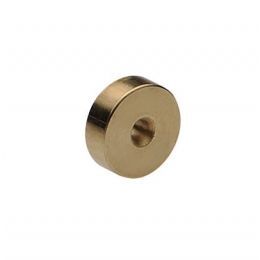
Remember how sheepshead and black drum feed: they use their teeth to crunch on barnacles and oysters.
Tungsten vs Brass vs Lead
Lead is a go-to for inshore anglers because it's cheap and widely available, but you should know that there are other options as well.
Tungsten is harder than lead and tends to be louder when dragged across oysters or used in conjunction with a glass bead or brass clacker.
The downside is that it is more expensive and that's why some anglers use brass instead.
When should you change sinker weight?
Choosing the correct sinker weight depends on how deep you are fishing and how fast the current is moving.
This is a real problem to consider, because if your Carolina rig is not heavy enough it will never reach the bottom of the water.
Instead, it will be swept up and over the heads of biting fish and they'll never see it in the first place!
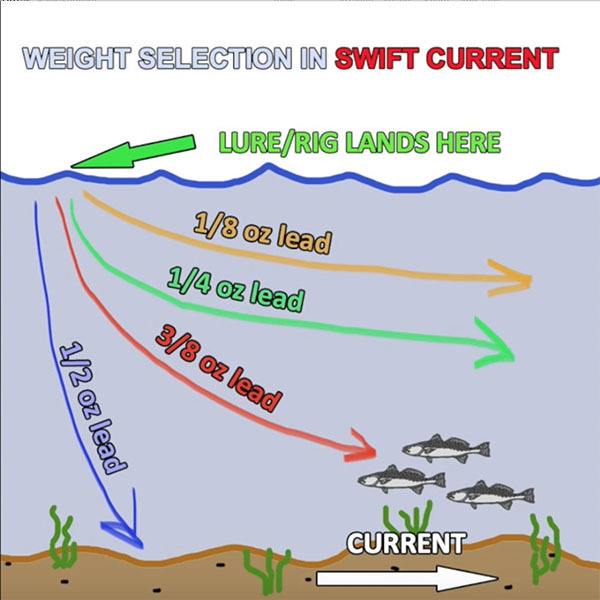
Knowing the best weight to use makes the difference getting in front of fish.
Go too heavy and you'll leave your bait stuck on the bottom, instead of flowing with the current to the waiting mouths of hungry fish.
So which weight is best? It depends and that's why I created this free course detailing how to effectively fish each spot you cast a line, so you never miss biting fish.
Best Main Line To Use With A Carolina Rig
This is a good question and years of experience have proven that 20lb test braided fishing line is the best to fish with a Carolina rig for inshore species.
Consider moving up to 30lb or 40lb for bigger bull redfish.
A good brand to consider is Daiwa J-Braid.
Recommended Rod & Reel Setup For Saltwater Carolina Rig
Spinning tackle is recommended!
For a spinning reel you should consider something rated for saltwater use and in the 2500 to 3500 size.
For this I use a Daiwa Saltist 2500.
For a rod I use a Daiwa Saltist SIN76MHXS.
Best Baits To Use
Live shrimp will be your best all-around live bait to use. Use these tips to keep them alive.
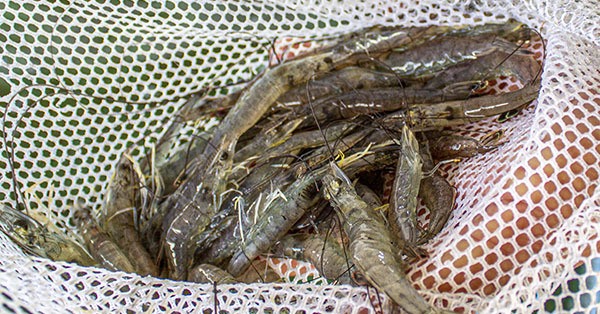
Cracked blue crab is a great choice for bull redfish and big black drum.
Live cocahoe minnows tend to work better for flounder, and live croakers are excellent for targeting big speckled trout.
Of course, you can always use artificial baits like Berkley Gulp shrimp, or swap out the khale hook for an offset wide gap hook and rig a fluke, or rig a 1/16oz jighead with Matrix Shad instead.
Ditching the bare hook for a Berkley Rattle Shrimp or DOA Shrimp is also a good choice.
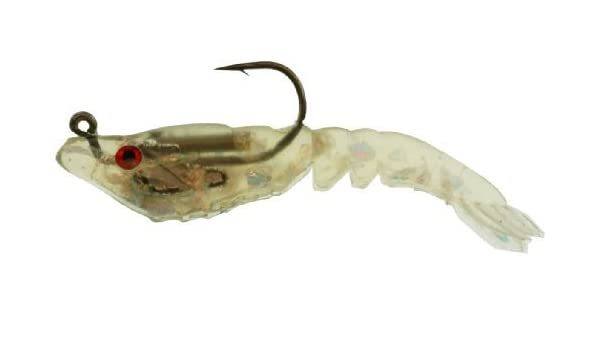
The Berkley Rattle Shrimp is a great alternative to using live bait for specks and reds.
Where To Fish Your Carolina Rig For Specks, Reds & Flounder
This is a very broad topic as there are so many factors to consider:
- time of year
- wind strength
- primary forage
- river water
- and more
This entire website is dedicated to locating fish, so I suggest you start with this seven step process to finding fish from scratch.
Storing Carolina Rigs For Future Use
These handmade rigs are great because they are easily stored in ziplock bags, where they can be tucked away and kept tangle-free for future use.
What about pre-rigged carolina rigs?
I don't see the point in these other than having something else for tackle stores to sell.
It's far more economical to tie your own, especially seeing that tying them is not difficult or time consuming at all.
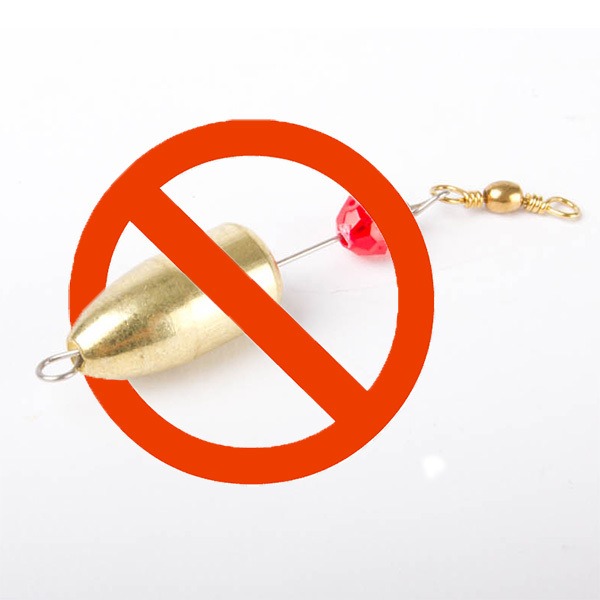
Just say "no" to pre-rigged carolina rigs.
Sometimes less is more, and that is why I don't fish with pre-rigged carolina rigs.
That and these won't allow the line to flow as freely through the sinker because the sinker is restrained to the wire.
So, you're better off tying your own.
What do you think?
While the guide here for tying a Carolina rig is pretty detailed, it cannot possibly cover every tip and trick used for fishing in every part of the world.
So, if you have your own special way of tying a Carolina rig, or something you'd like to add, then please mention it below in the comments.
If you'd like to be notified for more fishing tips geared for south Louisiana, then please consider subscribing to my newsletter.
Tight lines, y'all!

You’re welcome! And thank you for visiting my site!
Thank you, I’m a beginner at age 60 and I really appreciate and enjoyed your article.
Thanks for commenting, Melvin!
Devin, regarding the comments about casting vs spinning, due to shoulder problems I use spinning for jig fishing. During the day I catch myself questioning my lack of power and control with that setup. I’ve been a baitcaster for 60 years. For those wanting better control, go ahead, bite the bullet. You’ll be glad you switched. When Carolina rigging with live shrimp, with tight line fishing, you can manage the power and control. Tight lines really helps in that situation.
I hadn’t had my coffee yet, I was stuck with Nicholas Cage. lol Should’ve picked John Wick!
But what if Nick Cage already had decades of experience with an automatic, but no idea how to drive a stick…and his life depended on his ability to hop in one of those two cars and be gone in the next 60 seconds…would you tell him to go learn how to drive a stick, or toss him the keys to the automatic? ; – )
But your point is well taken! And thank you for the additional info on fishing the Carolina rig.
P.S. Personally I would have gone with a John Wick Mustang (or Chevelle – take your pick) reference…”learn to master a bait caster and slack line jigging will be as easy as John Wick doing a one handed magazine reload”…lol.
Devin,
I hope to use these tips this weekend.
Good follow up, but I wouldn’t recommend using spinning gear. The time to jump into casting gear is as soon as you can.
There’s no substitute. It’s simply too rewarding.
Fish with the line riding over your finger and watch where the line intersects the water’s surface, and it’s a whole other experience that really gets your head in the water in a way spinning tackle cannot.
It’s like the difference between driving with an automatic or manual transmission.
Sure, a stick and clutch can stall and its not nearly as forgiving as an automatic, but once you get the hang of it you’re directly in touch with the car in a way an automatic never can be.
Think about it, how badass would the GT 500 scene in Gone in 60 Seconds been if that car were an automatic? Nicholas Cage would’ve been caught! lol
Backlash will happen. You will pick it out. You may even have to cut the line off the spool and start over from scratch.
But it is worth it. The power and control Nicholas Cage had over that GT 500 is the same power and control you’ll bring to artificial lures. lol
On another note, I thought of some other items to consider when fishing a Carolina rig (to answer your original question of how to fish it).
Sometimes you may want to use a lighter weight and let the rig flow with the current.
Other times you may want to use a much heavier weight to drag the bait on the bottom.
Those two things will change how you fish the Carolina rig, one being casting, letting the rig flow with the current, then reeling in and casting again.
The other being letting it sit, drag, reel down, let it sit, drag, reel down, let it sit.
As mentioned in another comment, a clacker would be good for a heavier weight, and that heavier weight could make noises curious to fish if it were dragged across oysters/clams, especially black drum since they feed on them.
Hope that answers your question.
Also consider this: black drum eat oysters, and it’s a SWAG on my part that if they can hear oysters being crunched on they could come swimming to investigate.
So consider throwing a heavier weight, like a 1oz weight, to drag over oysters to create that crunching/scraping sound.
Just a thought.
Yes I’m sure it does I’ve already went to Gus’ Tackle for what I did not have. I can’t wait to use it.
LOL…I love your 3 step preferred method for Carolina rigging! And I don’t disagree. I am committed to learning how to master jig fishing, but would still like to have the Carolina rig in my arsenal (even if just for bait fishing). Your comments about jigging do lead me to a follow up question about jigging. I know that you strongly prefer casting gear over spinning gear for jigging. I also understand the reasons why, and they make total sense. But for those of us who have not yet mastered casting tackle – but who nevertheless want to start jigging in the meantime – I will ask: If you had to use spinning gear in the short term (while converting over to casting in the long term), what would your recommended setup (rod, reel, line, etc.) be for jigging with spinning tackle? Thanks!
Greg, I think some folks use the bank sinker because it has a wider hole and lets line flow through it more freely.
If it works for them, it works for them.
I wouldn’t say one is better than the other, it’s just something worth considering.
As for my preferred method for fishing a Carolina rig, it’d go something like this:
Step 1: Secure the hook to the hook keeper.
Step 2: Put that rod away.
Step 3: Pick up a jig tied on casting tackle and catch way more fish.
LOL! Sorry, couldn’t resist. I think a jig is a lot better than a Carolina rig (while keeping in mind that everything has its place) because I’ve caught an astronomical amount of fish on a jig that I cannot be convinced could have been caught on a Carolina rig.
A Carolina rig just lacks the finesse, power and control a jig brings to the table.
And by “jig” I mean a ball jighead with a 3/0 hook with a 3″ soft plastic rigged on it.
More details on that here: https://www.lafishblog.com/best-tackle-for-jigging-speckled-trout/
But, if I were stuck with a Carolina rig, how I fished it would really depend on the situation and what I was fishing for.
I guess my “catch all” answer would be just drag, let it sit, reel in the slack, drag, let it sit, reel in the slack.
It really depends, though.
You asked a really broad question.
It makes a cool ticking noise underwater. Definitely an attention grabber for fish.
Devin,
I never have used glass beads, I usually use the steel egg weight but I like the idea of the sound from the bead and weight.
Hey, Devin – I have a couple of questions: 1) What is the advantage of using a bank sinker (as on a Rucker rig) instead of the more common egg sinker? 2) What is your preferred method for fishing the Carolina/Rucker rig – raising the rod tip/bouncing it (similar to jigging), dragging it, slowly reeling it in, etc.? Thanks!
Thank you for the kind words. I’m glad to hear your niece caught ’em up. That’s what it is all about.
Tight lines!
These tips are great! Thank you so much for adding them, Daniel.
I think you can use FC, I just use it because mono doesn’t sink and it’s a lot cheaper. You should experiment and find what works best for you.
Thanks for commenting, George!
Yeah, braid can suffer badly from line twist. That’s why I like to remove twist from fishing line on my reels every now and then on fishing trips:
https://www.lafishblog.com/untwist-fishing-line/
Mono and fluoro are different, for sure. More on that here:
https://www.lafishblog.com/difference-between-monofilament-and-fluorocarbon/
Thanks for commenting, Stan!
I’ve seen some pre-packaged rigs like this. It’s a good idea!
Hey Lee, thanks for commenting!
The drop shot and carolina rig are most definitely not the same rig.
The c-rig is made for power fishing with heavier line and a bigger hook, while the other is made for finesse fishing with lighter line and a smaller hook.
For more on the drop shot, I suggest this blog post: https://www.lafishblog.com/drop-shot-for-speckled-trout/
Devin a drop shot rig seems very similar to a Carolina rig. A weighted main line with the bait suspended just above the bottom. Could you explain the difference and which situation each of the rigs should be used?
Here’s a trick for a Carolina rig that i picked up from some catfishermen. Once you get the rig tied and are ready to bait your hook. attach a cigar or oval shaped cork to the line between the swivel and the hook. This will float your bait up off the bottom resulting in far fewer snags.
I also use flourocarbon, precut 20 lb from bass pro 3 foot length. I use the three foot length Incase I break off between the hook and swivel for a quick retire .Will try mono next time. Question for ya. Is there a difference between mono fishing line and leader material ?
I always use Berkeley big game on all my reels-
15 lb green in spring summer fall and 12 lb clear in the winter. Quick look at spool tells me the pound test. I have just not had great success with Braid except with my offshore equipment using 80 lb spectra . I end up with wind knots on spinning reels and line digging into my bait casters. I Might be just installing it wrong. Could be another lesson?
Don’t use a Carolina rig that much, when I do I rig it like you described except I use flourocarbon ,guess I won’t do that anymore. Never thought about it sinking. When I do get to go fishing I always have gulp shrimp with me so next I might try them on a Carolina rig. I appreciate all you do.
Devin,
Overall, This is just fine. You covered pretty much everything. I have three things to consider.
1. You might want to mention something called a Carolina Keeper. It’s used more in bass fishing, but I like them for inshore at times as well. They eliminate the swivel and allow you to be able to adjust the length of the line between weight and hook.
https://www.amazon.com/Carolina-Keeper-Fishing-Tackle-8-Pack/dp/B003OB9HF6
This won’t work where you need a leader that is different than your main line or the leader already tied at the end of your braid.
2. I suggest using lures with positive buoyancy with the Carolina rig. I’m sure others will work, but it makes sense to me that lures with positive buoyancy would have better presentation. Z-man lures material is positively buoyant and so is voodoo shrimp.
3. I used to pre rig snapper leaders and keep them on something called a leader ring or wheel. https://www.google.com/shopping/product/11713455726030563736?q=fishing+leader+holder&client=safari&sa=X&hl=en-us&biw=375&bih=553&tbs=vw:l,ss:44&prmd=sinv&sxsrf=ALeKk01hR15x_kGMJQLdbvmuc3kPDd3XAA:1598836623938&prds=cdl:1,prmr:1,cs:1
There not much difference between snapper leaders and the leaders for a Carolina rig. The leader ring will allow someone to store several pre-made (by yourself) leaders, so they area ready to go if you lose one.
Good stuff, I appreciate what you’re doing.
This is the only Carolina rig setup I use now. It has increased my catch numbers a lot over the ‘pre rigged’ rigs I used in the past. I set up all three rods of my nieces for a recent trip and even the youngest was catching more fish. Great article!